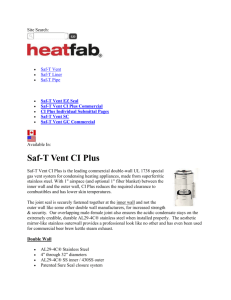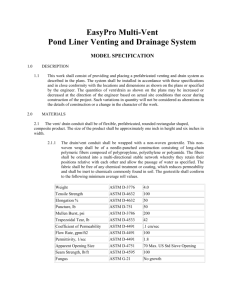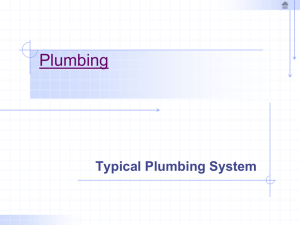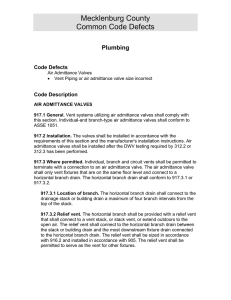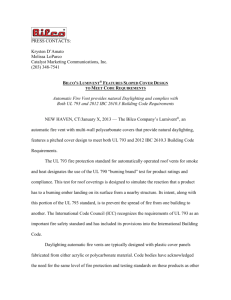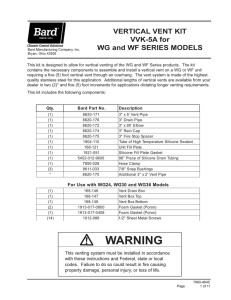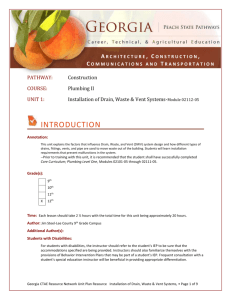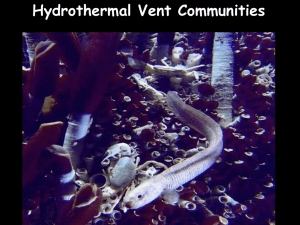Drain Waste Vent
advertisement
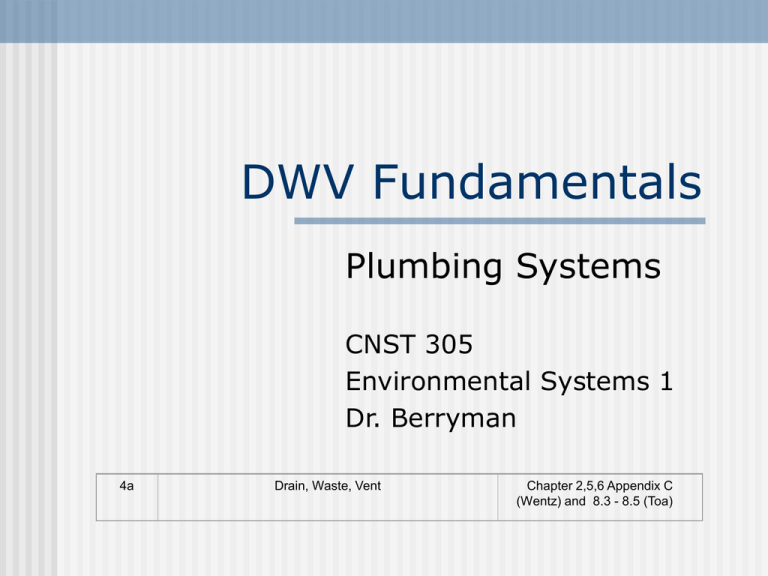
DWV Fundamentals Plumbing Systems CNST 305 Environmental Systems 1 Dr. Berryman 4a Drain, Waste, Vent Chapter 2,5,6 Appendix C (Wentz) and 8.3 - 8.5 (Toa) Trap Uses water seal to prevent backflow of gasses into building P Trap Integral Traps Venting Removes dangerous odors and explosive gasses Prevents Positive pressure Negative pressure If not properly vented, a waste slug could either blow out or siphon the trap seal Venting (cont.) Drainage systems flow by gravity As such: EVERY TRAP or PLUMBING FIXTURE MUST HAVE A VENT Isometric Diagrams Combining Vents Loop Vent Circuit Vent Example Isometric Diagram Design Guidelines for Drain and Waste (for most codes) All traps must be vented The waste stack cannot be smaller the the largest horizontal branch connecting to the stack • 4” branch cannot connect to a 3” stack At least one waste stack same as building drain No branch pipe smaller than the one that proceeds it Above ground cannot be less that 1¼” Below ground cannot be less than 2” Design Guidelines for Drain and Waste (cont.) 1 ¼” drain pipe can handle on 1 DFU A drain line cannot be smaller than the trap arm to which it is connected Use 4” trap arm for floor mounted water closets • Some codes do allow 3” (however, this is not generally recommended) Design Guidelines for Vents (for most codes) Above ground venting cannot be less than 1 ¼” 1 ¼” vent can handle on 1 DFU Underground venting cannot be less than 2” in diameter Vents must be a certain distance from the trap that it serves • (tble 19 ANSI A40 1993 Standard) Design Guidelines for Vents (cont.) An individual vent must not be less than ½ the size of the drain that it connects • 4” drain cannot connect to any pipe less than 2” in diameter An individual vent should not be larger than the drain that it connects Downstream piping always bigger than the upstream section • Downstream, in its natural state, is going OUT of the building Design Guidelines for Vents (cont.) A vent line must be 6” above flood level rim of the fixture before turning horizontal Branch vents must slope toward a drain Some codes require that at least one of the building’s VTR be 4” in diameter or larger Next Time Sizing DWV 4bc Drain, Waste, Vent Chapter 2,5,6 Appendix C (Wentz) and 8.3 - 8.5 (Toa)


